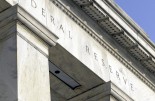Fidelity: Fed not to lower interest rates until June
Fidelity: Fed not to lower interest rates until June

Anna Stupnytska, Global Economist at Fidelity International, comments on the Fed’s decision to keep rates unchanged:
'At the latest FOMC meeting, the Fed decided to keep rates unchanged as was widely expected. The focus for the meeting was on the Fed's guidance on interest rates, which did get changed in the statement, as the reference to 'additional policy firming' was dropped, potentially opening the door to a rate cut at upcoming meetings.
But with data continuing to come in stronger than expected, the statement pushed back at the idea that a cut is imminent, stating that a cut is only likely once the committee has 'gained greater confidence that inflation is moving sustainably' to the Feds inflation target.
In the press conference, Chair Powell stressed that the FOMC needs to have greater confidence that inflation is moving to target sustainably. He emphasised the Fed remains data dependent, is not declaring victory over inflation just yet and March is not a likely start to the cutting cycle.
Interestingly, Powell suggested that instead of focusing on all components of inflation moderating, what’s the most important for the Fed now is 'the aggregate number' which is very different from what they have prioritised before.
We believe it will take a bit longer for the Fed to accumulate more evidence on inflation and get more clarity on how monetary policy transmission works its way through to the economy. This rules out an early start to the cutting cycle, which is consistent with Powell's comment on March not being the base case.
Given stickiness in some components of inflation, we view inflation risks as still skewed to the upside in the coming months, especially against the backdrop of a strong economy. This means that the Fed is unlikely to be in the rush to cut until June, and once the cutting cycle starts it will not be on autopilot - the pace of cuts will crucially depend on the growth/inflation mix at the time.'








